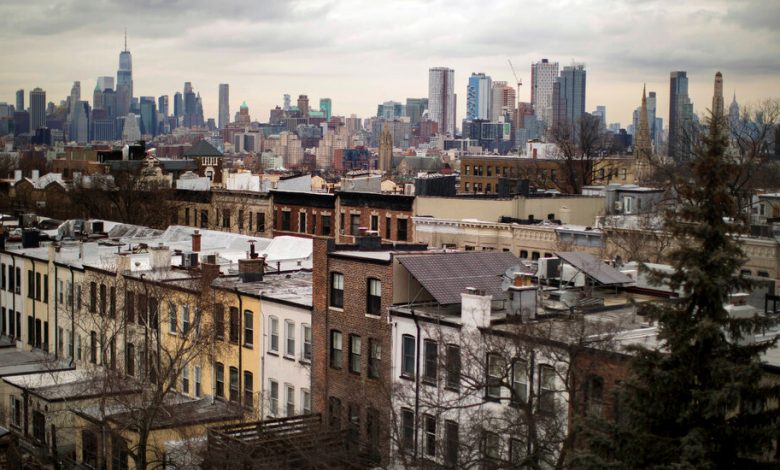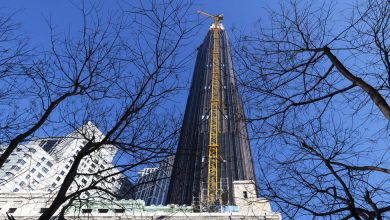New York City Rent Hike: What You Need to Know

[ad_1]
New Yorkers who live in rent-stabilized apartments will soon pay higher rents — 3.25 percent more on one-year leases and 5 percent more on two-year leases — the sharpest increase in nearly a decade.
Despite pleas from tenants for a rent freeze or even a reduction, on Tuesday New York City’s Rent Guidelines Board voted 5 to 4 to raise rents. The increase comes as soaring rent costs have concerned New Yorkers for months. In May, the median rent in Manhattan reached $4,000, a record high.
Mayor Eric Adams called the system “broken,” in a statement. He said, “the determination made by the Rent Guidelines Board today will unfortunately be a burden to tenants at this difficult time — and that is disappointing.”
“At the same time, small landlords are at risk of bankruptcy because of years of no increases at all, putting building owners of modest means at risk while threatening the quality of life for tenants who deserve to live in well-maintained, modern buildings,” Mr. Adams said.
What is rent stabilization?
New York City’s rent stabilization system was enacted in 1969 in response to considerable rises in rents. Rent-stabilized apartments are subject to limitations on how much the rent increases, as well as other protections to tenants.
“Rent stabilization provides real value for households that are lucky enough to secure a stabilized unit. They have longer tenures and less housing instability, particularly in the highest cost neighborhoods,” said Matt Murphy, the executive director of the New York University Furman Center. “But the system has the potential to inflict negative consequences on the broader rental market in terms of housing quality and supply.”
Andrea Shapiro, the director of program and advocacy for the Met Council on Housing, a tenants’ rights organization, said that the recent vote defeats the purpose of rent stabilization. “The whole point of rent stabilization is that New York City is in a housing emergency, and we need this board to truly regulate the market because landlords can get away with huge rental increases,” Ms. Shapiro said.
How many people will be affected?
Over two million tenants will be impacted by the increases. The board makes decisions that affect about one million rent-stabilized units.
How rare is an increase of this size?
During Bill de Blasio’s mayoralty, the highest increases approved by the board were 1.5 percent for one-year leases and 2.75 percent for two-year. But during Michael R. Bloomberg’s tenure as mayor, there was a much higher increase in 2013: 4 percent for one-year leases and 7.75 percent for two-year leases.
Who will feel the impact of this decision the most?
Lower-income New Yorkers will be hit the hardest by this increase, which will apply to leases that begin on or after Oct. 1.
“New Yorkers who live in rent-stabilized housing have a lower median income and pay a lower median rent when compared to those who live in unregulated apartments,” Mr. Murphy said. “Over half of renters in New York are rent burdened, so even small increases in rent would exacerbate the effects of rent burden.”
Adán Soltren, a tenant representative on the board who voted against the rent increase, said that this rise will be “devastating for low-income and moderate-income New Yorkers, as well as predominantly Black and brown New Yorkers.”
“It’s a significant amount of money for people on fixed incomes and people who are struggling during a pandemic that’s not over,” said Mr. Soltren, a lawyer with the Legal Aid Society.
For those who depend on rent stabilization to afford living in New York, this increase will make financial choices even more difficult. “There are tenants living in relatively affordable rent-stabilized apartments who really rely on limited rent increases to be able to get by,” Ms. Shapiro added. “They haven’t gotten large raises at work, and they’re seeing huge inflation at the grocery store. This is going to make people choose between food, rent or medicine.”
What is the Rent Guidelines Board and who are the members?
The Rent Guidelines Board has nine members in total, all appointed by Mr. Adams. Two represent tenants, two represent landlords and the five others represent the general public. The board establishes rent adjustments for residential units subject to New York City’s Rent Stabilization Law.
If the rent is going up, is it still considered a rent-stabilized apartment?
Yes.
“Technically these apartments will remain subject to rent stabilization, which in addition to having rent increases set by the Rent Guidelines Board, means tenants have certain protections against evictions, the right to renewal leases, the rights of family to succeed to the lease, and more,” said Sophie Cohen, a staff lawyer with the Tenant’s Rights Unit at New York Legal Assistance Group. “These will be stabilized, but when a rent-stabilized apartment has annual rent increases of this magnitude, it is no longer about affordability and sustainability for tenants.”
How does this increase tie into the recent spikes in the cost of housing in the United States?
“The rise in rent-stabilized rents and market rate rentals aren’t typically related — rents don’t rise or fall in rent-stabilized housing based on what’s happening in market-rate housing,” said Mr. Murphy. “If anything, historically, increases in market-rate rents might have tempered increases in the rent-stabilized portfolio.”
But the common denominator right now is inflation, Mr. Murphy said. “In order to hold net operating income constant in real terms, which is something the rent guidelines board aims for, rents have to adjust.”
[ad_2]
Source link






